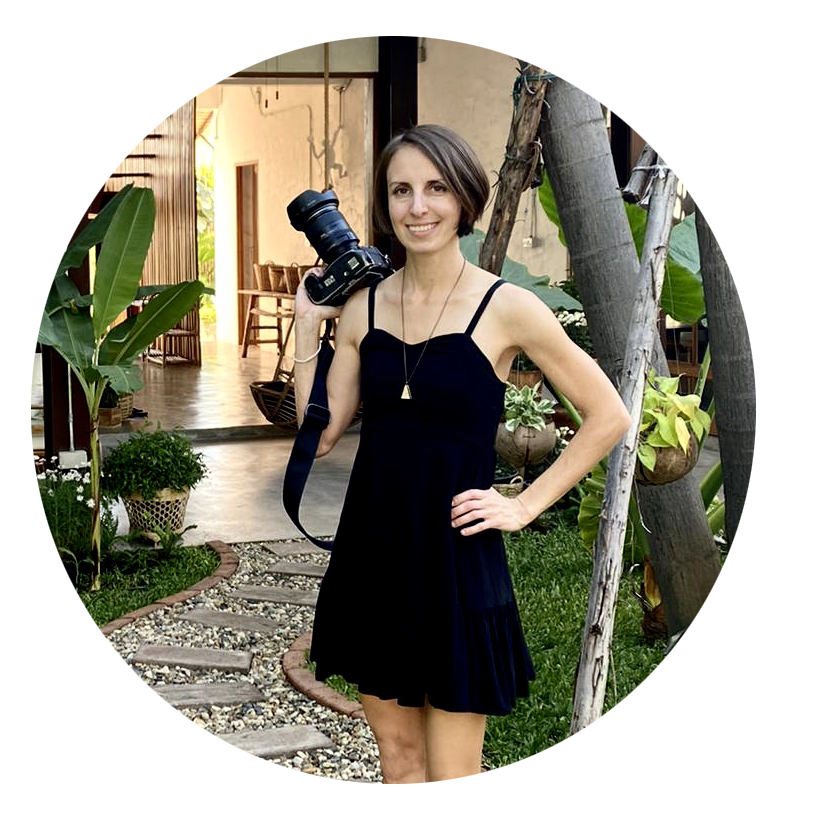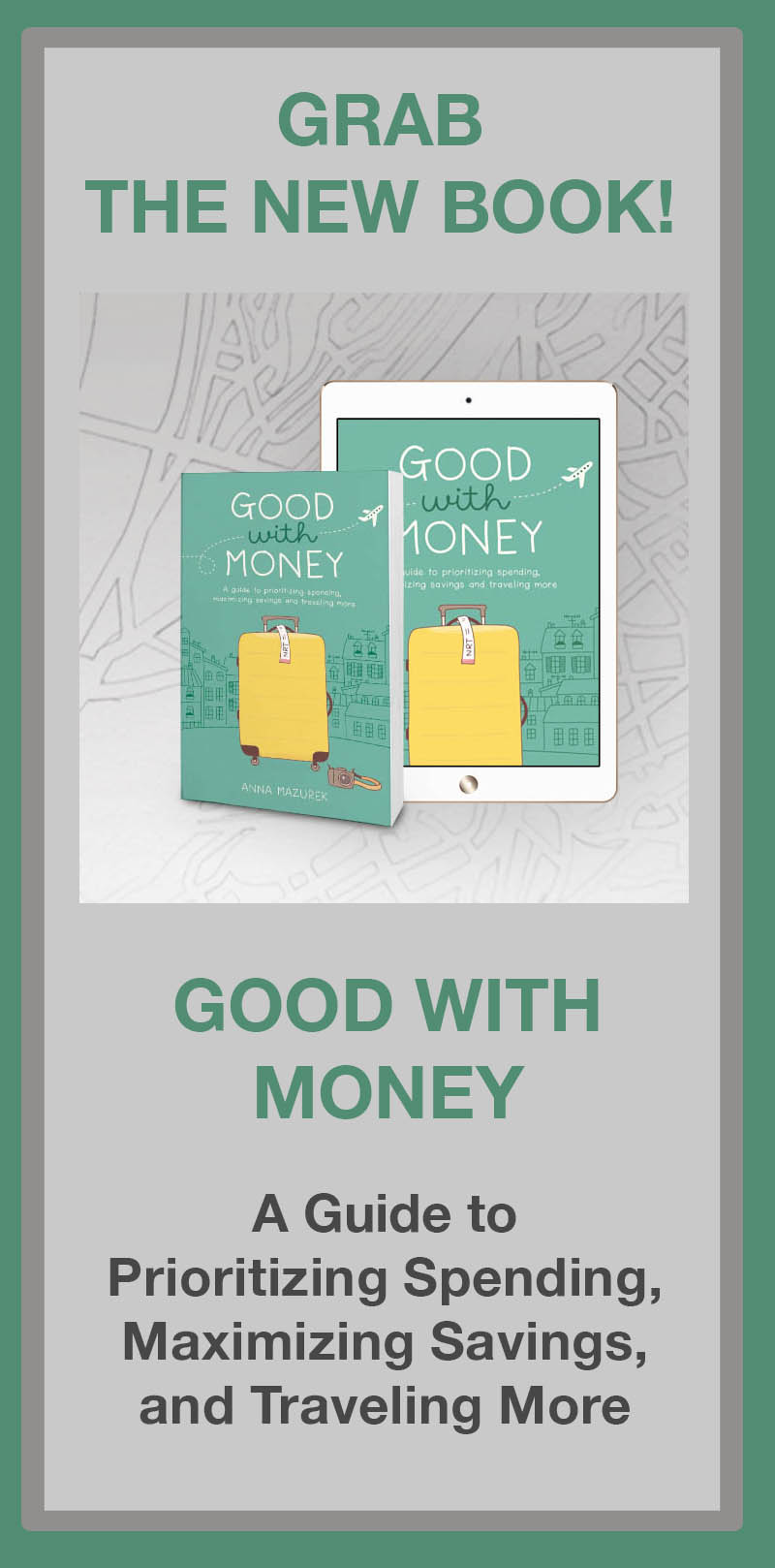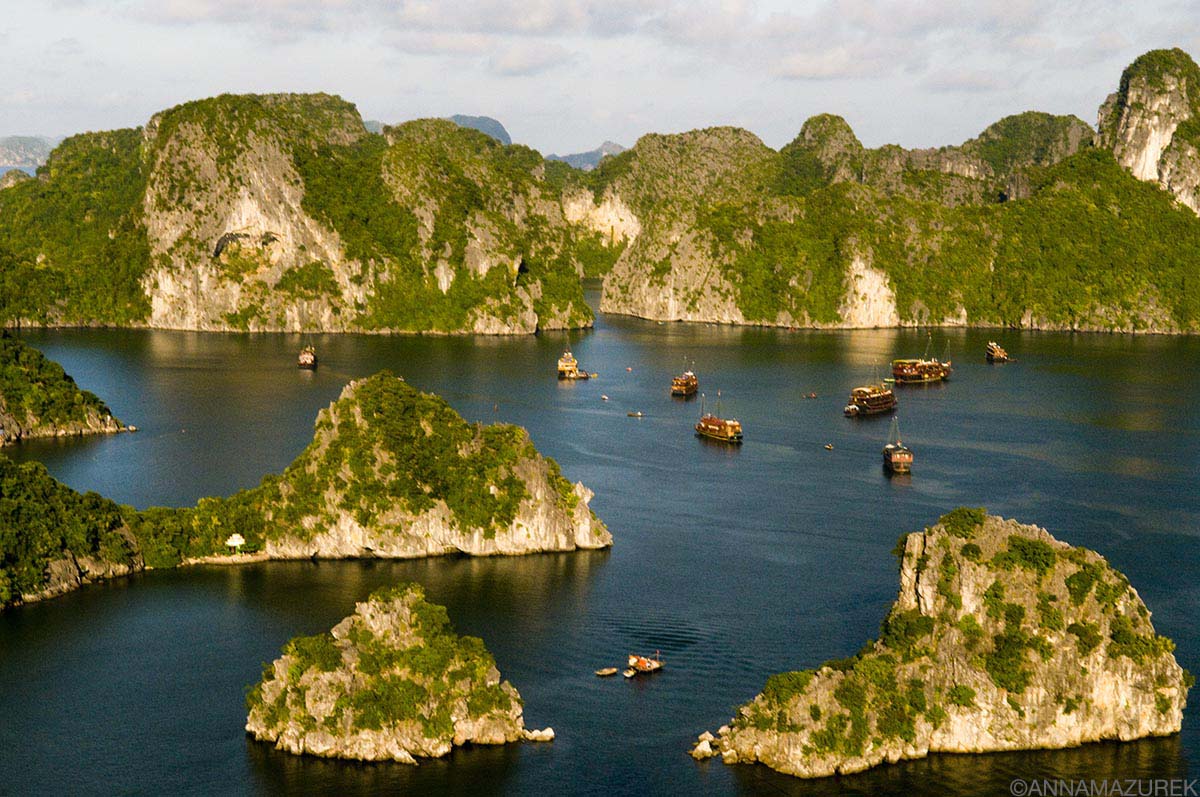
Like India, Vietnam can be a sensory overload of beauty and complexity. The scenery is diverse—the mist-covered mountains of Sapa, the seemingly endless swarms of motorbikes in Hanoi and the tower limestone pillars of Ha Long Bay. I consider travel the best teacher, and there’s no better place to get a lesson in world history than this Southeast Asian nation.
I visit Vietnam at least once a year for work, so I decided it was time to compile a travel guide of my favorite places to visit in Vietnam and the ones to avoid. (I’ve worked for multiple travel companies running trips across the country. In addition, I did a month-long 2019 backpacking trip to some lesser-visited spots.)
Keep reading for all the details about where to go in Vietnam and how to best prepare for your trip! (The locations are organized by region: north, central and southern Vietnam.)
I recommend booking transfers on Klook for convenience and using 12go.asia for bus and train tickets if it’s too much hassle to go to the station to buy them directly. Please read reviews before booking.
Affiliate links are used in this post. If you make a purchase, I earn a small commission at no cost to you, which goes toward the cost of maintaining this blog.
Plan Your Trip
Currency: Vietnamese Dong (VND)
When to Go: July to September for beaches. December to March for cooler temperatures.
Travel Insurance: Protect yourself with SafetyWing travel medical insurance to cover accidents and travel delays.
Mobile eSIM Card: Get seamless connectivity worldwide with Airalo minus the hassle of physical SIM card. (Save 10% with code AIRALOESIM10!)
Northern Vietnam
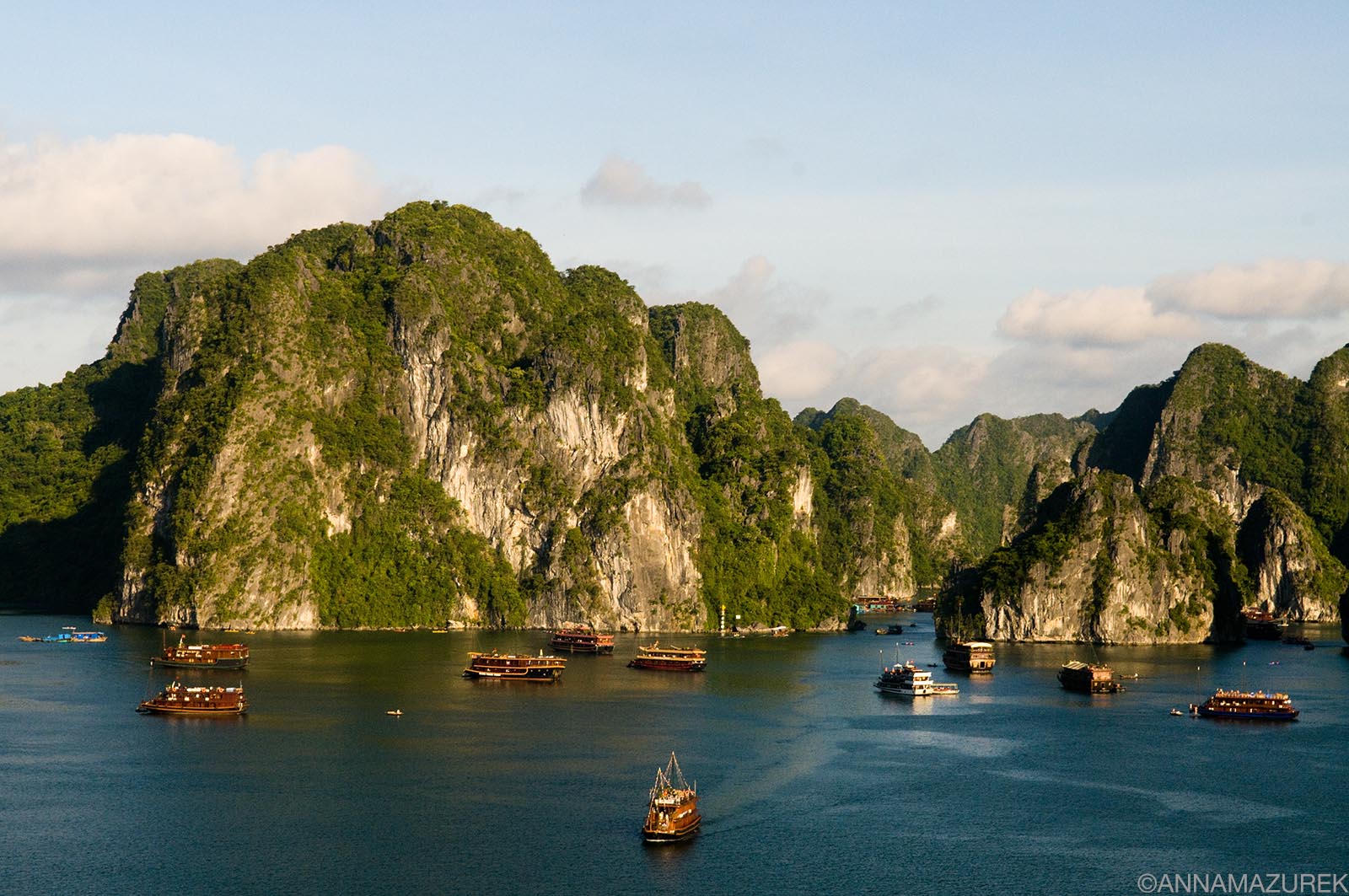 The best time to go swimming in Ha Long Bay, Vietnam is between April and October.
The best time to go swimming in Ha Long Bay, Vietnam is between April and October.
1. Ha Long Bay & Lan Ha Bay
Ha Long Bay, a UNESCO site, is one of those places like Machu Picchu that you must visit once in your life. The scenery is postcard-perfect: towering limestone karsts and over 1,100 islands scattered through the Gulf of Tonkin’s emerald waters. It is the number one attraction in Vietnam. The best way to experience the bay is to do a multiple-day cruise on a houseboat to explore the islands, swim and eat year weight in fresh seafood! There are day boat trips and overnight cruises for every budget. I recommend spending a night or two on a houseboat!
Ha Long Bay vs. Lan Ha Bay
Historically, Ha Long Bay spread across two provinces and was split into sections controlled by two different local governments—Ha Long Bay to the north and the Lan Ha Bay to the south bordering the coast of Cat Ba Island. (Both bays are included in the UNESCO area.) Over 300 boats operate in Ha Long Bay (popular with Chinese tourists) but only 64 in Lan Ha Bay, according to my local guide on a recent visit.
While both share the same scenery, Lan Han Bay has less pollution and tourists, but less infrastructure, which I’ve witnessed on my visits to both. There are no caves in Lan Ha Bay or scenic viewpoints like the one in my photo above from Ha Long Bay. The caves are one of the noteworthy features in the UNESCO nomination. While the caves are stunning, they get crowded.
While it’s possible to book last-minute budget tours on Klook or GetYourGuide, luxury boats, like the Ginger by Heritage Line, (stunning ship I stayed on for work trip) fill up four months in advance. To visit both bays, consider booking separate back-to-back one-night trips on different boats. (Only a couple of boats with good government relationships can operate in both bays.)
When to Visit Ha Long Bay & Lan Ha Bay
If you want blue skies, visit from April to October. June to August is steaming hot but less crowded. November to March brings cooler weather (highs in the 60s in January) but often consistent gray skies. September to October is packed with tourists. My visits have always been in January or July. I prefer July for blue skies.
How to Get to Ha Long Bay
Most people fly into Hanoi’s Noi Bai International Airport, the country’s second-largest airport, and take a transfer. (There are two smaller airports near Ha Long Bay—Van Don International and Cat Bi International.) If a transfer isn’t included in your boat tour, you can find affordable transfers through Klook. It’s roughly a three-hour drive.
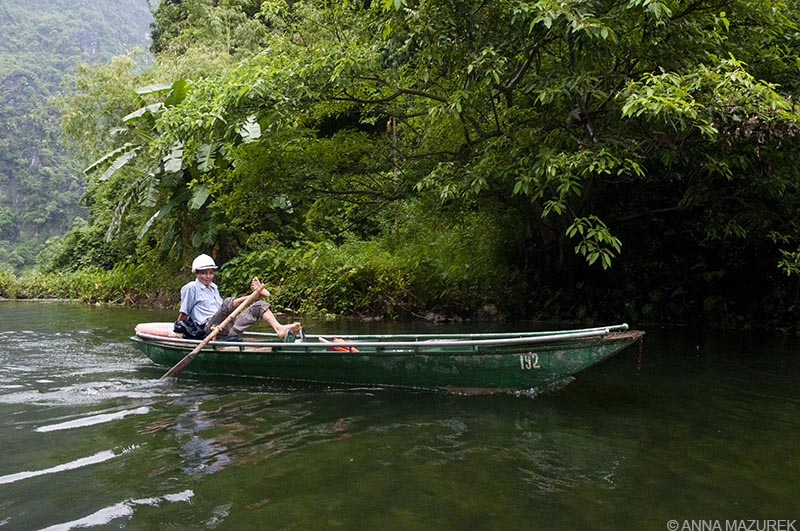 If you like the idea of riding a boat through stunning caves, then add Tam Coc to your list. The rowers use their feet to move the oars just like this guy!
If you like the idea of riding a boat through stunning caves, then add Tam Coc to your list. The rowers use their feet to move the oars just like this guy!
2. Ninh Binh
The Ninh Binh province is known as the “Ha Long Bay on land” famous for row boat tours through giant caves and alongside limestone karsts. The most stunning boat ride is Trang An (Route 3), which is a three-hour tour through spectacular scenery and the kilometer-long Hang Dot cave.
When the rice fields are green (wet season), Tam Coc, a 1.5-hour boat trip where the boat guides row with their feet, is beautiful, but Trang An is better if you only have time for one.
The viewpoint from Mua Cave is worth the 500-stair climb but again is best when the rice fields are green. My other favorite places include the picturesque Bich Dong Pagoda and cave temple (free entry), and Bai Dinh Pagoda, a photogenic 4,200-acre Buddhist complex, one of the largest in Southeast Asia, that’s easily explored on an electric cart shuttle.
Hoa Lu Old Town in Ninh Binh City is a stunning sight of two towering modern pagodas lit up at night with detailed carvings inside. This free attraction was built in 2022, so don’t get it confused with Hoa Lu Ancient Town, the historic site of the first capital of Vietnam that’s 11 kilometers away.
Tam Coc is a good base for exploring the area. In January 2025, I stayed at Tam Coc Mountain Sunset and Garden Hotel ($30 USD/night) with spacious rooms with a convenient location with a pool and helpful English-speaking owner. I recommend staying a few nights in the area, but there’s also plenty of day tours from Hanoi if you are short on time.
How to Get to Ninh Binh Province
The Ninh Binh province is roughly an hour and 45 minutes southeast of Hanoi. The cheapest option is public buses from Hanoi. I recently took this $7 shared transfer from Hanoi, which was efficient and involved transferring to an SUV to drop me off directly at my hotel.
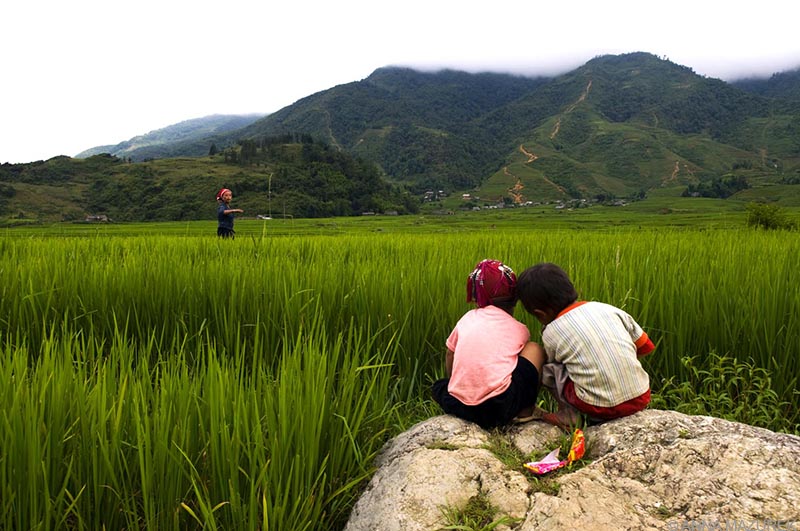
This shot from Sapa is one of my favorite travel images from Asia.
3. Sapa
The former 1922 French hill station is the trekking mecca of Vietnam. The views of the valley from the town are stunning. (The photo above is one of my favorite images I’ve shot in all my years in Asia.)
Popular treks include Fansipan, the highest mountain in Vietnam (3143 m); Cat Cat, a village three kilometers south of Sapa; Ta Phin Village, a 10-kilometer hike from the city; Sa Seng & Hang Da, a hike along the eastern ridge is great for valley views. Be warned—the tourist touts and aggressive vendors are relentless in Sapa. (I visited a village with a student group and each student had one vendor following them around town the entire day trying to see them something.) Despite this, the scenery is unreal and worth the trip!
How to get to Sapa
Sapa is located 195 miles northwest of Hanoi (closest airport) near the China border. By car or bus, it’s about a five-to-six-hour journey depending on traffic. I’ve taken the roughly seven-hour sleeper train previously, which goes from Hanoi to Lao Cai (closest station to Sapa). It’s an additional 50-minute transfer from there to Sapa. There are also cheaper sleeper buses for about half the price of the train ($11-16 USD).
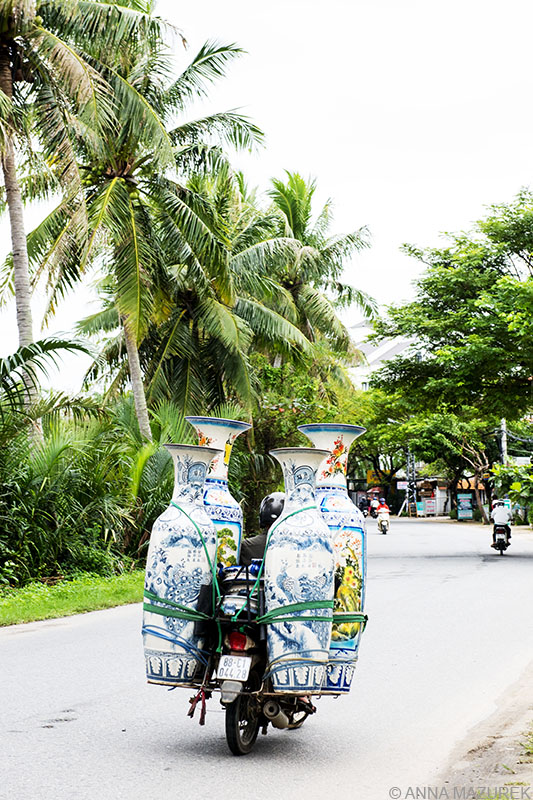 Hanoi is the mecca of the motorbike madness, and this is just a taste of the crazy things you’ll see on motorbikes there!
Hanoi is the mecca of the motorbike madness, and this is just a taste of the crazy things you’ll see on motorbikes there!
4. Hanoi
Hanoi is both the capital of the country and the chaos. Hordes of motorbikes cover the streets. Find a safe spot on the sidewalk to people watch as the motorbikes defy gravity and logic with their loads which range from refrigerators to a family of five with a dog and my favorite – dozens of plastic bags filled with water and live goldfish tied to a giant hoop structure on the back of the bike.
Wander the streets of the Old Quarter and the Hoan Kiemshopping district where streets are organized by the goods they sell. (This is really annoying if you need to buy a pen and you’re on the shoe street.) Pho bo (beef noodle shop) is a must for breakfast along with a traditional Vietnamese coffee, which is medium to coarse ground dark roast with a small metal drip filter.
For a bánh mi, try Banh Mi 25. The Note Cafe is an Instagramable spot covered floor-to-ceiling in post-it notes while JOMA is one of my favorite café chains in Southeast Asia for breakfast. For an adrenaline adventure, visit Hanoi 1990s, a small cafe perched on the edge of Hanoi’s famous train street where a handful of trains come buzzing by daily just inches from your table.
Go for a stroll around Hoàn Kiếm Lake and cross the red bridge to Ngoc Son Temple. Stop by the Temple of Literature and the Ho Chi Minh Museum. If you want to say hello to “Uncle Ho”, stop by his mausoleum. Be warned – he’s been preserved and is on full display in typical communist fashion. For more details on the city, check out my Hanoi guide.
How to get to Hanoi
Hanoi is home to the second busiest airport in the Vietnam and connected by bus or train easily to major destinations across the country. While Ho Chi Minh City has more international flights, Hanoi is also easy to get to.
Central Vietnam
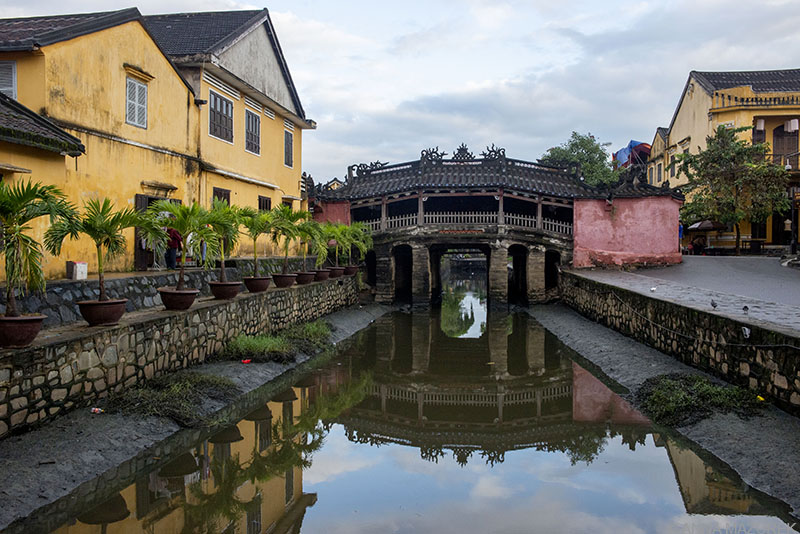 The Japanese Covered Bridge is one of the top sights in Hoi An. After a week of rain, this is the first time I saw blue sky!
The Japanese Covered Bridge is one of the top sights in Hoi An. After a week of rain, this is the first time I saw blue sky!
5. Hoi An
Hoi An is my favorite city in Vietnam. The UNESCO site is one of Southeast Asia’s major seaports and reminds me a bit of Charleston—the same quaint historic charm, old colonial buildings and an overload of tourists. As per usual, I got up at sunrise every morning to photograph the city and did the same at sunset. Highlights include the Japanese Covered Bridge, the Assembly Hall of Cantonese Chine Congregation, which has cool dragon carvings, and the Assembly Hall of the Fujian Chinese Congregation.
The best Banh Mi spots in town are Banh Mi Queen (I loved the chicken!) and Banh Mi Phuong (Anthony Bourdain loved this spot). Streets Restaurant Café had the best Cau Lau I had on the whole trip. It’s also a nonprofit that trains underprivileged youth to work in culinary and hospitality fields.
How to get to Hoi An
The closest airport is Da Nang, which is roughly a 30-minute drive. I booked a direct transfer to Hoi A from Da Nang on Klook for around $10, but there are even cheaper group transfers. Read reviews before booking!
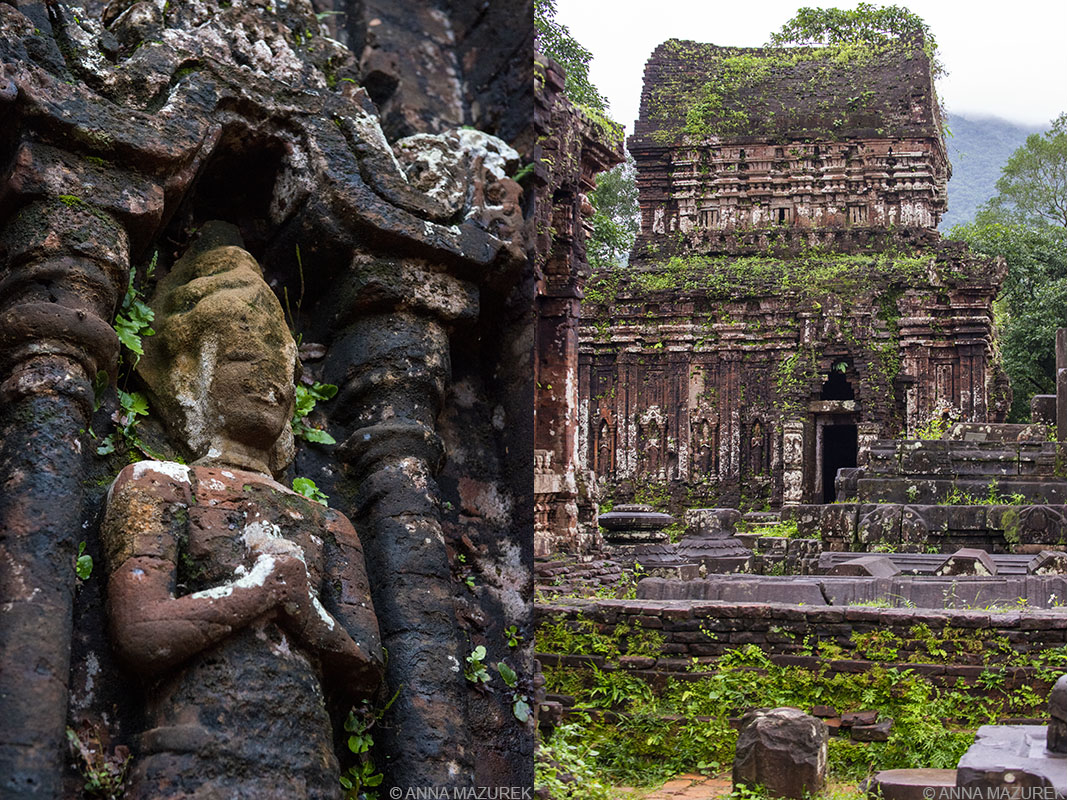 I highly recommend visiting the ruins of My Son, a Hindu temple complex built between the 4th and 14th Century to honor the god Shiva. It’s easily assessable from Hoi An or Da Nang by tour, car or motorbike. I did the sunrise tour to avoid the crowds in my photos.
I highly recommend visiting the ruins of My Son, a Hindu temple complex built between the 4th and 14th Century to honor the god Shiva. It’s easily assessable from Hoi An or Da Nang by tour, car or motorbike. I did the sunrise tour to avoid the crowds in my photos.
Day Trips from Hoi An
Hoi An is a great hub to do a few day trips including visiting My Son, the ruins of a Hindu temple complex. (Consider booking one of the sunrise tours I loved being there so early!) You can do it on your own if you have a motorbike. I also recommend renting a bicycle and heading over to the coconut village for a boat ride on one of the circular boats. It’s a very touristy thing but such a fun experience. Check out my Vietnam Instagram story for videos from the trip!
Traveling to Southeast Asia?
Read my guides to Thailand, Chiang Mai, Bangkok and Singapore!
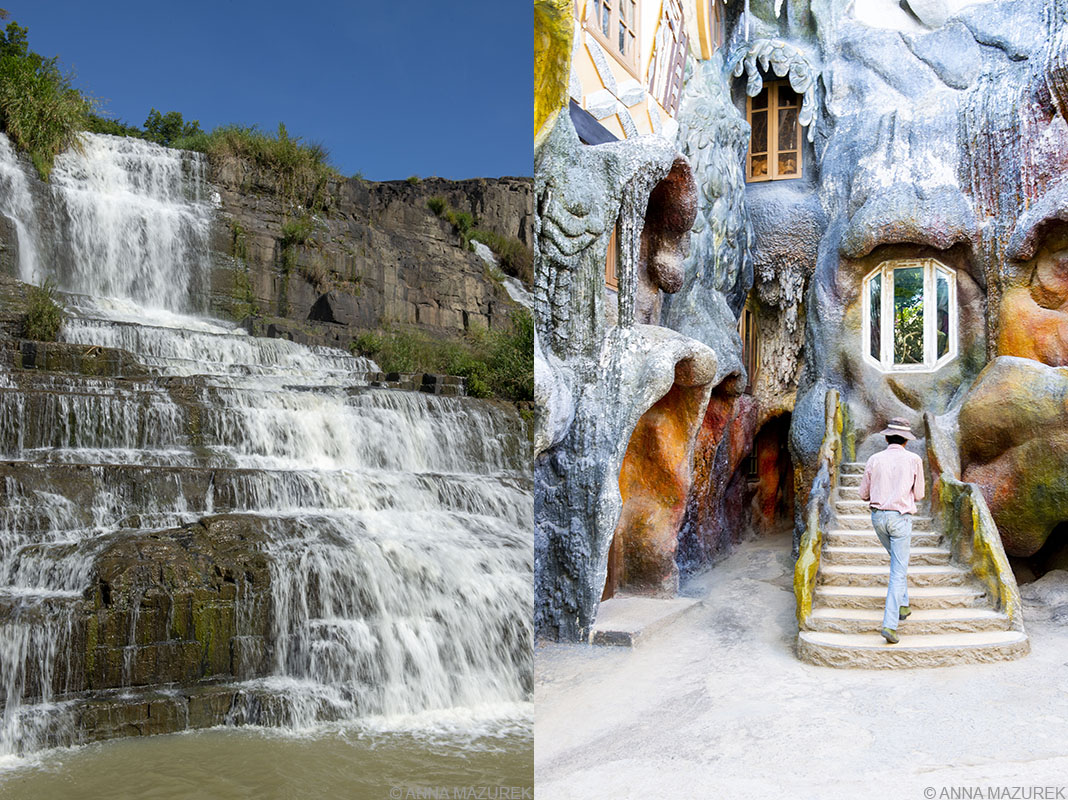 Left: Pongour Waterfalls outside of Da Lat. Right: Crazy House, a Gaudi-inspired tourist site that is also a hotel mixed in the site.
Left: Pongour Waterfalls outside of Da Lat. Right: Crazy House, a Gaudi-inspired tourist site that is also a hotel mixed in the site.
6. Da Lat
Da Lat is the Medellin of Vietnam. The French fled to this mountainous region to escape the heat. It’s now the adventure capital—trekking, canyoning, white water rafting and mountain biking are all options. The vibe is much more laid back than the rest of Vietnam, which I loved. I spent most of my time here visiting waterfalls. My favorite was Pongour, but the roller coaster at Datanla waterfall is a must. (It’s a one-car self-controlled system so it’s super fun!) I recommend checking out the Hang Nga Crazy House, which was built by a Vietnamese architect inspired by Gaudi. You can visit and also book a room for the night! Don’t miss the 100 Roofs Bar that resembles the set of a Lord of the Rings movie.
How to get to Da Lat
The closest airport is Lien Khuong Airport, roughly 18 miles south of the city. There are sleeper buses from Hanoi (7 hours) and vans/buses from Nha Trang (4 hours) and Mui Ne (5 hours). I took a long-haul sleeper bus from Hoi An (14 hours).
Southern Vietnam
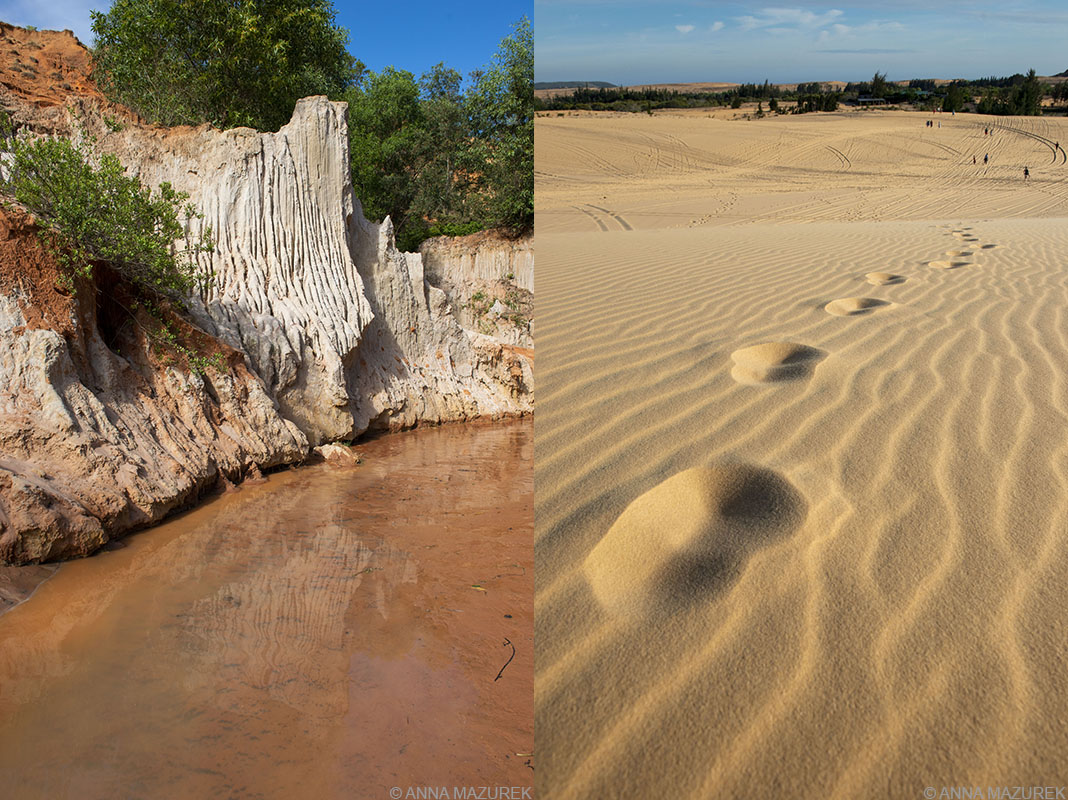 Left: Fairy Spring in Mui Ne, Vietnam. Right: The “white” sand dunes that are 24 km from town.
Left: Fairy Spring in Mui Ne, Vietnam. Right: The “white” sand dunes that are 24 km from town.
7. Mui Ne
Mui Ne is the kitesurfing capital of Vietnam. The town itself doesn’t have the best beach but the town is close to some cool attractions. For $5, you can take a jeep tour to the red sand dunes near town and the white sand dunes (24 km from town). The tours also take you to Fairy Spring, a stream that flows through some cool rock formations and sand dunes. (It’s easily accessible from town by foot.)
The best place to eat in town is a Mediterranean spot called Sindbad and Dong Vui Food Court, an open-air food court with independently run stalls that range from German sausages to paella. There are also loads of Vietnamese options and tons of beer.
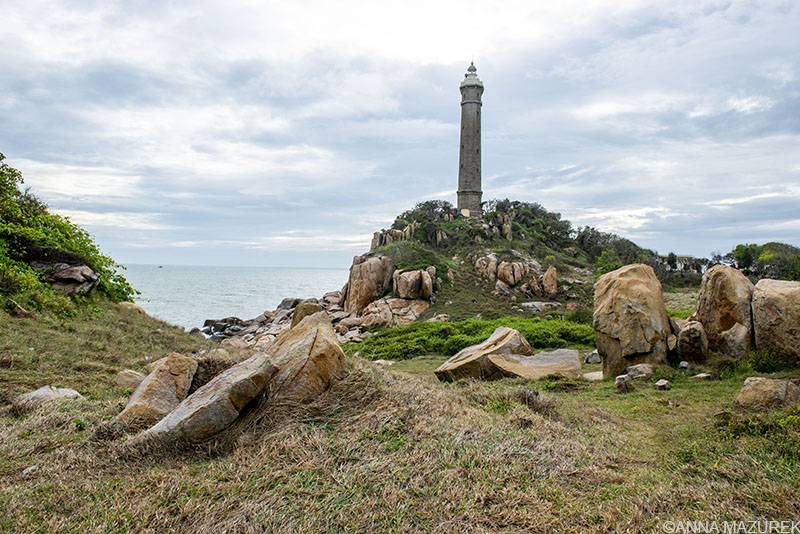 Ke Ga Lighthouse was one of my favorite spots in Central Vietnam! Very few people visit so I totally recommend it. I had the island to myself!
Ke Ga Lighthouse was one of my favorite spots in Central Vietnam! Very few people visit so I totally recommend it. I had the island to myself!
The main reason I went to Mui Ne was to visit the Ke Ga Lighthouse, a remote lighthouse built by the French in 1899 that lies on a rocky islet 300 meters from the coast. I’m obsessed with lighthouses so I had to go. To get to the lighthouse, you need a scooter or a car. Then, you have to take a ferry to the island ($6 USD in 2019). I had the island mostly to myself except for a few officials working on the island.
For the best photos of the lighthouse, take the dirt paths that lead off to the side and shoot back toward the lighthouse. The lighthouse is right by a fishing village, so the sea is lined with boats to the right of the islet, which is also great for photos.
How to get to Mui Ne
I took a bus from Da Lat to Mui Ne (5 hours) then I took a bus to Ho Chi Minh (3 hours). There is no train station in Mui Ne and the nearest airport is Ho Chi Minh. You can book group and private car transfers on Klook to Ho Chi Minh and other cities.
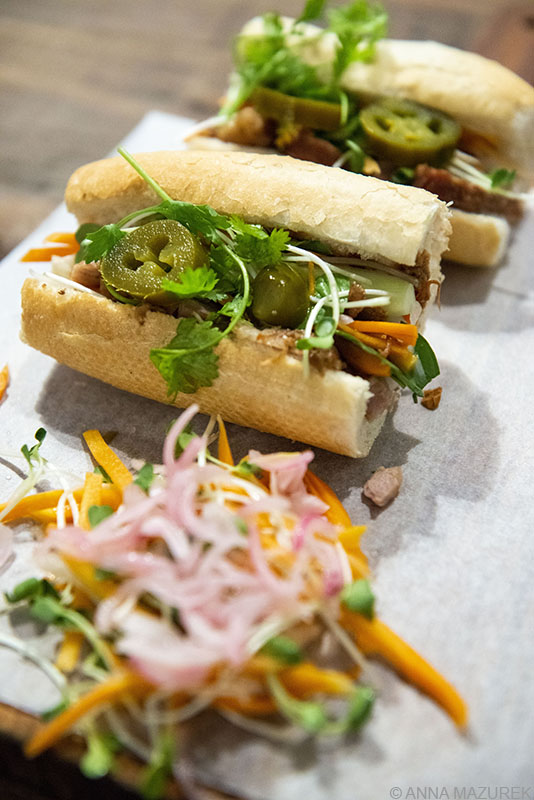 Banh Mi from L’Usine cafe in Ho Chi Minh.
Banh Mi from L’Usine cafe in Ho Chi Minh.
8. Ho Chi Minh City (Saigon)
Ho Chi Minh City (HCMC) is another epicenter of the motorbike madness. This city is worth a visit for a few days just to witness the chaos and visit the war museum and other war-era sights. The view from Bitexco Financial Tower ($9 USD) really helps put into perspective the expansive size of the city. (I suggest buying tickets advance through Klook for your preferred time slot because it’s same price as buying in person without any lines.)
Surprisingly, HCMC is the craft beer capital of Southeast Asia. My favorite breweries were Pasteur Street Brewing Company (great IPA & tap room) and Heart of Darkness. BiaCraft and Belgo (Belgian brewery) also have good brews and food.
Take a morning walk to view the 19th-century French colonial architecture, including the yellow Central Post Office, Notre Dame Cathedral (under renovation until 2027) and the 1897 Opera House. The only way to see the opera house interior is to attend a show—one of the frequent AO Show performances combining acrobatics, music and dance, or a production of the Ho Chi Minh Ballet Symphony and Opera.
My favorite cafes and sandwich spots to eat are The Old Compass, L’Usine, The Vintage Emporium, and Banh Mi 3362. ABC Bakery Café was a great spot to grab a fast and cheap breakfast to go!
Where to Stay in Ho Chi Minh City
Au Lac Charner ($73/night plus taxes) is my favorite hotel with a rooftop pool in Ho Chin Minh City. It also has free breakfast and is located by the Bitexco Financial Tower. (My favorite hostel closed during the pandemic so I don’t have any hostel suggestions, unfortunately.) If you’re looking to splurge, the Park Hyatt Saigon ($289) is the nicest hotel in town with an amazing pool, gym and a mind-blowing breakfast! (I stay at the Park Hyatt for work but at the Au Lac Charner otherwise.)
Fore more details, check out my Ho Chi Minh City Guide!
How to get to Ho Chi Minh City
Ho Chi Minh is home to the busiest airport in Vietnam and the main transport hub. (I always fly through Ho Chi Minh when I’m flying back to the U.S. from Southeast Asia because I fly through Japan because of my successful points hacking with American Airlines/ oneworld alliance.) You can take buses, vans and the train anywhere in Vietnam from there. Keep in mind that Hanoi and Ho Chi Minh are on opposite ends of the country and a 30-hour train ride apart.
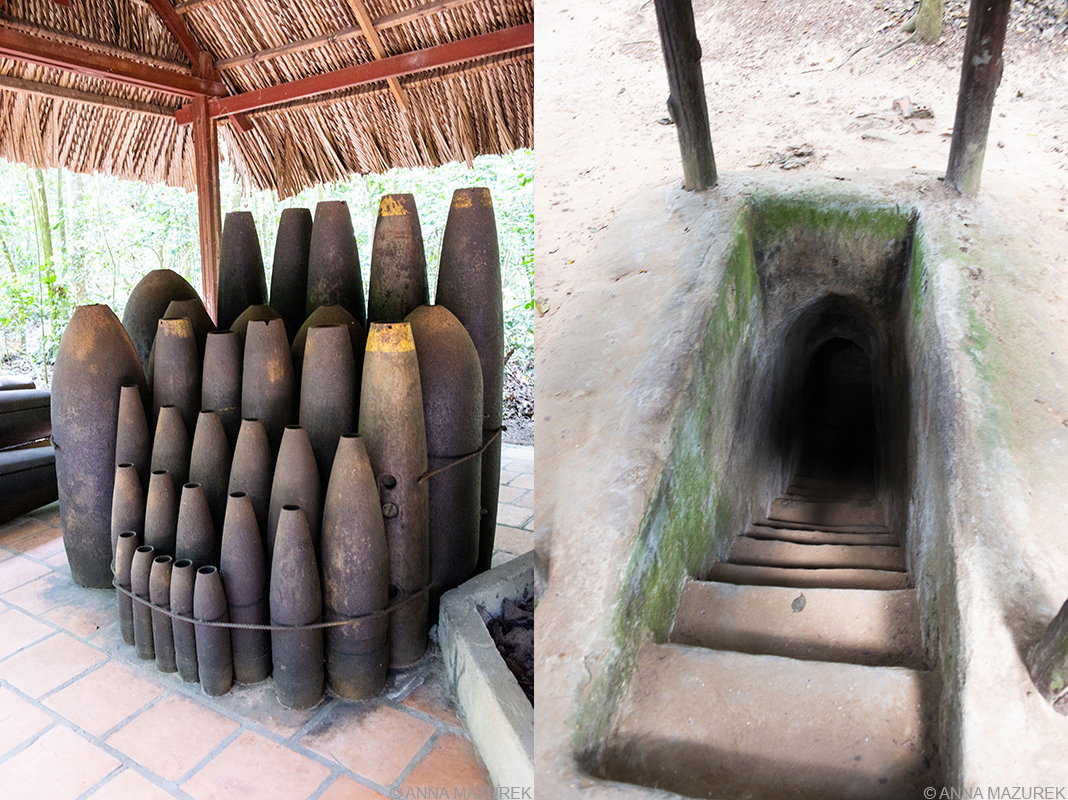 Left: Artillery left over after the Vietnam War is on display at the Ben Douc tunnels, part of the Cu Chi Tunnels. Right: The entrance to one of the tunnels.
Left: Artillery left over after the Vietnam War is on display at the Ben Douc tunnels, part of the Cu Chi Tunnels. Right: The entrance to one of the tunnels.
9. Cu Chi Tunnels
Cu Chi is a rural area about 30 to 40 km from Ho Chi Min that’s famous for a legendary spiderweb of tunnels used in the 1960s by the Viet Cong to control the area. There are two sets of tunnels: Ben Dinh and Ben Duoc. Ben Dinh is the most touristy one because it’s easier for tour buses to reach it. Ben Duoc is the best one in my opinion because it’s not touristy. (Trust me, I’ve been to both!) There was only a handful of people when we went. (We went by public bus from Ho Chi Minh City, which was one of my favorite days in Vietnam. I wrote a post about how to get to the Ben Douc tunnels by public bus.)
I’ve found conflicting sources that state that Ben Dinh was constructed only for tourists and Ben Douc is part of the real tunnel network. I can’t find a reliable source to verify this. Lonely Planet says that Ben Douc was widened for tourists but is less touristy. (There’s a set of stairs leading into the tunnels, which clearly can’t be original. Honestly, they probably both were widened at the entrances, but they are still tiny.)
How to get to the Cu Chi Tunnels
While it’s easy to find tours to visit Ben Dinh, I recommend taking the public buses (they have air conditioning!) to Ben Douc using my step-by-step guide!
Read my guide on how to get to the Cu Chi Tunnels (Ben Douc) by public bus!
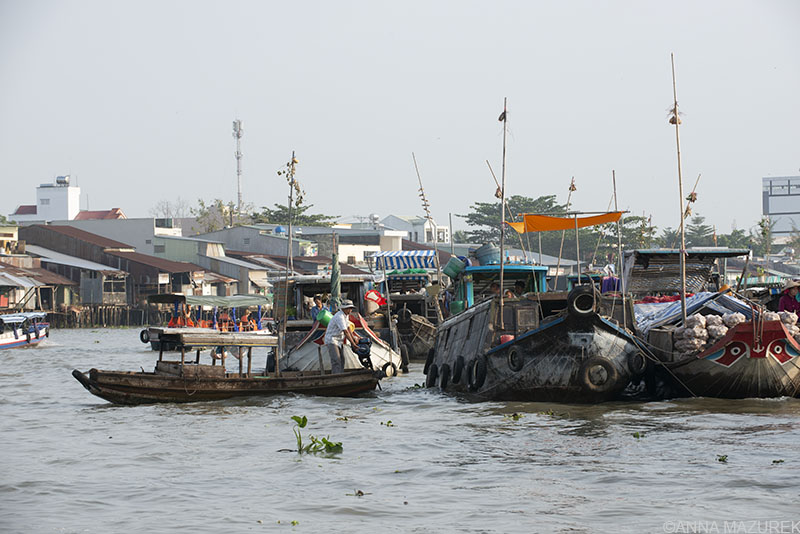 Vendors tie what they are selling to poles at the Cai Rang Floating Market in the Mekong Delta near Can Tho.
Vendors tie what they are selling to poles at the Cai Rang Floating Market in the Mekong Delta near Can Tho.
10. Mekong Delta
Can Tho is the main hub in the Mekong Delta that’s filled with large gardens and bustling markets. It’s the jumping-off point for visiting the famous Cai Rang Floating Market, the biggest one in the Delta. Vendors tie what they are selling to a pole so you can shop easily. There are also boats that serve coffee.
Tours are available, but I recommend showing up at the dock at 5 a.m. to negotiate for your own boat. I went with a friend and we met three cool Australians who joined us. We paid about $4.30 USD each in 2019. One of the highlights was stopping by a fruit orchard. We got to paddle around in little boats in the orchard and sample the fruits. This town is also memorable because it’s how I ended up in a van with a rooster for five hours. I’m also a huge fan of the market town of Chau Doc, which has a wet market that’s really cool to photograph.
How to get to Can Tho, Mekong Delta
Can Tho is a four-hour bus ride from Ho Chi Minh, which is what I’ve done. Can Tho International Airport is only a few miles from the city.
Vietnam FAQ
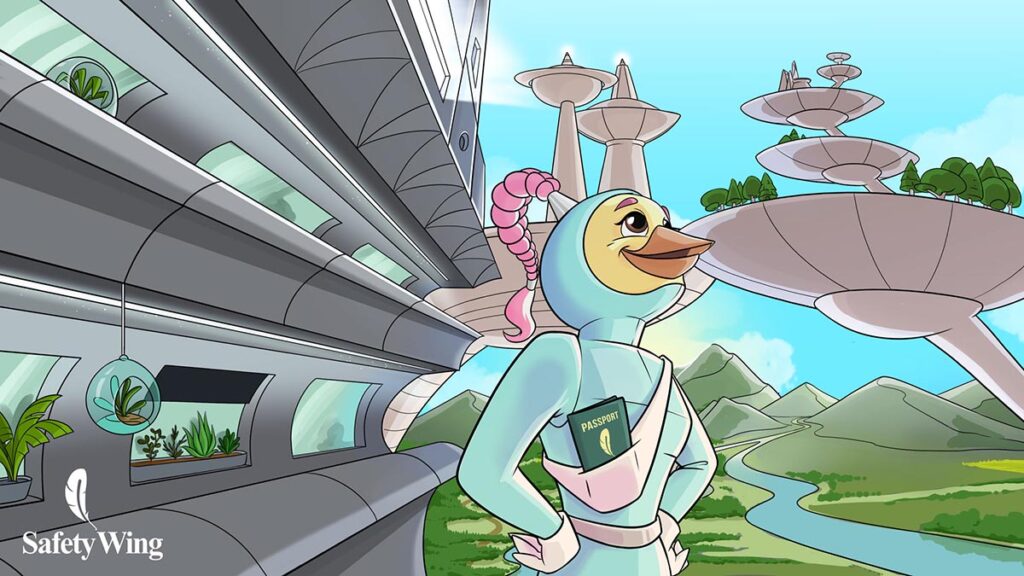 SafetyWing travel medical insurance covers travelers in Vietnam and over 180 countries.
SafetyWing travel medical insurance covers travelers in Vietnam and over 180 countries.
Do you need travel medical insurance for Vietnam?
Yes, travel medical insurance is one of the most important things to purchase for any trip abroad, especially Vietnam. It covers all the things that could go wrong from injuries to travel delays so that you don’t have to worry and can focus on traveling!
SafetyWing’s Nomad Insurance offers $0 deductible travel medical insurance coverage for over 180 countries for people aged 69 and under when traveling outside their home country. The best part is that it only costs a few dollars a day! If you get sick or injured abroad, you can visit any hospital or doctor. Other benefits of Nomad Insurance include coverage for lost checked luggage, travel delays over 12 hours, motor accidents (if properly licensed, wearing all safety equipment and not intoxicated) and injuries from sports or leisure activities. You can even add adventure sports, electronics theft and U.S. coverage (for non-residents) to your policy.
One of the best things about SafetyWing is that you can buy policies abroad and speak to a REAL human from the 24/7 customer support team if you have questions! (I can vouch that they are excellent at assisting and will follow up with you afterward.) Pay in full or choose an auto-renewing plan that can be canceled anytime.
If you’re abroad for 90 days, you can get 30 days of home-country coverage. (For the U.S. residents, it’s 15 days.) Plus, every single part of the process from purchasing a policy to filing a claim is easy, which is why SafetyWing has been the best travel medical insurance policy for me. Read my review of using SafetyWing in Southeast Asia.
Where’s the best place to buy a SIM card in Vietnam?
The easiest thing to do is buy a Vietnam-specific eSIM card from Airalo that will work instantly when you arrive. (Airalo partners with Viettel, the fastest network in Vietnam.) For more details, read my review of Airalo eSIM cards in Southeast Asia.
If you are traveling to multiple countries in Southeast Asia on a short trip, then consider one of their Asia Regional eSIM cards. (Both the country-specific and regional eSIMs have worked wonderfully for me and even have a mobile hotspot option that’s critical for me because I’m always working remotely.) Keep in mind it’s always cheaper to buy a country-specific eSIM than a regional one.
Promo Codes: New customers save 15% off with NEWTOAIRALO15 and existing users save 10% with AIRALOESIM10.
Be sure to join the free Airalo Loyalty Program to earn 5% cash back for every purchase, which can be redeemed on future purchases. For more about eSIM cards, check out this post on the pros and cons of eSIM cards!
Where is the best place to get clothes made in Vietnam?
While Ho Ani is the most popular spot in Vietnam to get clothes made, I was unimpressed because every tailor shop I visited only seemed to only have material to make winter suits or wedding dresses. I was looking for wrinkle-resistant fabric for summer dresses and tanks. I tried again in Ho Chi Minh City but didn’t have any luck until a friend introduced me to Elegant Silk, the best place to get clothes made in Ho Chi Minh. This tailor had a wide variety of fabric options. She had silk blend fabric that was fairly wrinkle-resistant. In early 2024, I had her copy an existing tank and dress while also making a new wrap-around skirt for $70 USD.
In Hoi An, I have friends who raved about Blue Chic for men’s suits and Two Ladies for summer dresses.
Where is the best craft beer in Vietnam?
Vietnam has the best craft beer in Asia. Trust me, I’m a craft beer connoisseur and have traveled and lived all over Asia. While Ho Chi Minh is the epicenter, there are also taprooms in Hanoi. The two biggest brands—Pasteur Street Brewing and Heart of Darkness—have multiple tap rooms in HCMC while Pasteur has one in Hanoi. Both do a great job of incorporating local flavors like jasmine and pomelo. (Pasteur Street’s signature Jasmine IPA and Pomelo IPA are my two favorites.) BiaCraft and Belgo (Belgian brewery) also have good brews and food in Ho Chi Minh City. In Da Nang, stop by the Heart of Darkness taproom.
What about the caves in Vietnam?
Phong Nha-Ke Bang National Park, a UNESCO site, is filled with hundreds of caves including the world’s biggest cave, Hang Son Doong. (Two of my friends went to Hang Son Doong and loved it. It’s not cheap and you have to book months if not a year in advance.) I was in the area during the rainy season so I didn’t visit any of the caves. (Water levels are a huge safety issue during the rainy season. ) April to August is the best time to go.
How are the beaches in Vietnam?
I’m not a fan of the beaches in Vietnam. I’ve been on a quest to find the best beaches in the world, and they aren’t in Vietnam or even Southeast Asia for that matter. To be brutally honest, every beach I went to in Vietnam was polluted. I even went to Phu Quoc island, one of the main attractions. I went to all the prime snorkeling spots and there was trash and beer cans in the coral. This part of the world is notorious for plastic pollution, and I was there at the end of the rainy season, which tends to kick up more of the pollution.
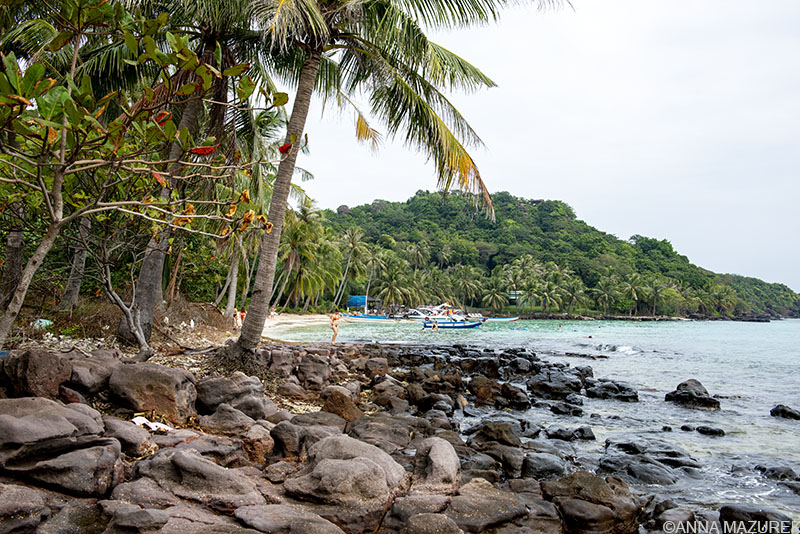 This is a shot from one of the islands near Phu Quoc that’s part of all the snorkeling tours. All the debris you see on the left side of the frame under the trees is some kind of trash or plastic. Aside from the main small bit of beach, the sides of the island were covered with trash like this.
This is a shot from one of the islands near Phu Quoc that’s part of all the snorkeling tours. All the debris you see on the left side of the frame under the trees is some kind of trash or plastic. Aside from the main small bit of beach, the sides of the island were covered with trash like this.
I visited three beaches in Vietnam—Mui Ne, Na Trang and Phu Quoc—on a 2019 trip and never wanted to go back to them. They were mostly polluted or overrun with tourists. If you stay at a resort then, it’s nice because they clean the beaches, but the snorkeling will still be polluted. (In my opinion, the best beaches in the world are in the Caribbean. Anguilla and Costa Rica are hard to beat. Maldives (resort islands) and Fiji are nice, too.)
Please be kind to the environment and avoid single-use plastics in this part of the world. Read this post about how to be a better eco-friendly traveler.
Vietnam 101: Logistics, Costs & Safety
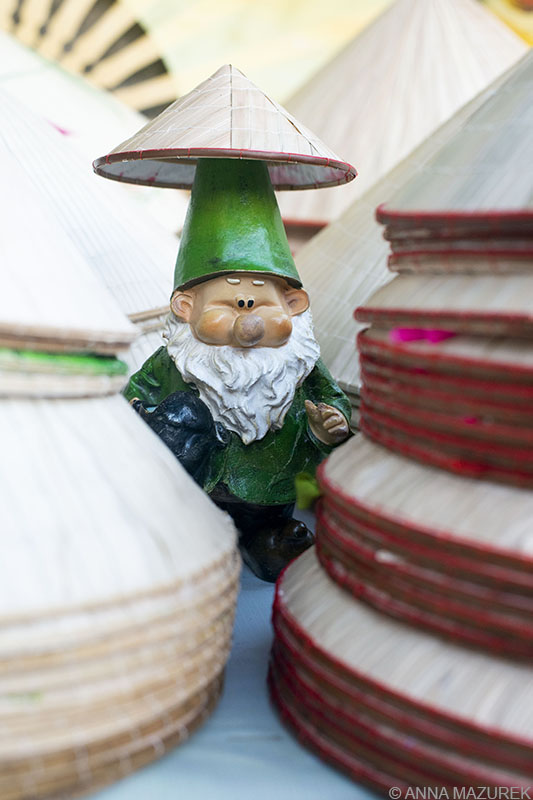 Alfred the Gnome did a bit of hat shopping in Hoi An. Clearly, this hat was meant for a gnome.
Alfred the Gnome did a bit of hat shopping in Hoi An. Clearly, this hat was meant for a gnome.
When to Go To Vietnam
Hanoi, Sapa & Northern Vietnam: March – May & September – November
Central Vietnam (Hoi An, Mui Ne, Da Lat): March – September
Ho Chi Minh & South: November to February
July and August are high season. Monsoon rains are common. It’s really cold in Hanoi and northern Vietnam during January so avoid those months especially if you want to swim in Ha Long Bay.
The Cost of Traveling in Vietnam for a Month
In 2019, I spent a month in Vietnam and spent $991 in total. If you look through my Vietnam Instagram story, you’ll find a saved story highlight on Vietnam with a detailed breakdown. This includes my $156 flight from Thailand.
Average Transport Costs: overnight buses ($15); overnight trains ($30) and the ferry roundtrip to Phu Quoc was $20.
Accommodation: Hostels cost about $4-9/night.
Food: Street food ranges from $1.40-2/meal. Restaurants start at $3 and up. Craft beer is $5 in the big cities.
Splurges: I splurged on a $32 snorkeling trip in Phu Quoc (not worth it), $45 lighthouse tour (Ke Ga Lighthouse – totally amazing) and $50 Ba Na Hills visit (only good if the weather is nice).
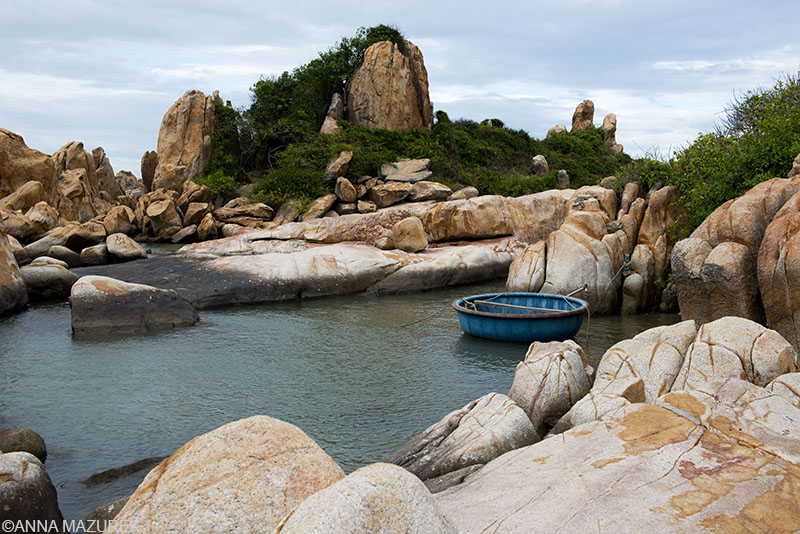 A round boat anchored to the island where Ke Ga Lighthouse is located outside of Mui Ne in Central Vietnam.
A round boat anchored to the island where Ke Ga Lighthouse is located outside of Mui Ne in Central Vietnam.
How to Get a Vietnam Visa
Americans need a visa before entry into Vietnam, and an e-visa is the easiest option that I always use. (I visit every year.) E-visas are available for up to 90 days with single or multiple entries. I applied online for a 30-day e-visa, which was approved really quickly. The normal turnaround time is three “working” days in Vietnam. Please note these are only valid if you arrive at one of their main ports, which is most of the major airports and major land borders. Be sure to check the list in advance.
As of 2024, the cost is $25 for single entry and $50 for multiple entry. Apply online at https://evisa.gov.vn/. Make sure to apply early. I made a mistake on my recent multi-entry application, and it took them three days to tell me it was wrong. I had to start over again from scratch and wait another three days to get it approved.
Is Vietnam Safe?
Overall, Vietnam is a really safe place to travel. There are a lot of scams in Hanoi, Ho Chi Min and Na Trang. I honestly felt like taxi drivers were always trying to scam me. (Never take a street taxi by meter because the meters are often rigged. Agree on a price in advance or take a Grab, a rideshare app that’s similar to Uber and used all over Asia.)
Keep a steady hand on your phone, wallet or purse in the Hanoi and Ho Chi Minh. Thieves on motorbikes are a real concern. I met people who narrowly avoided losing their phones this way. I use a phone case with a finger loop so I always have a stronger grip on my phone.
There’s still a large amount of unexploded landmines. Be on high alert in rural areas and abide by all signs. For example, the My Son ruins had signs warning you to stay on the trails.
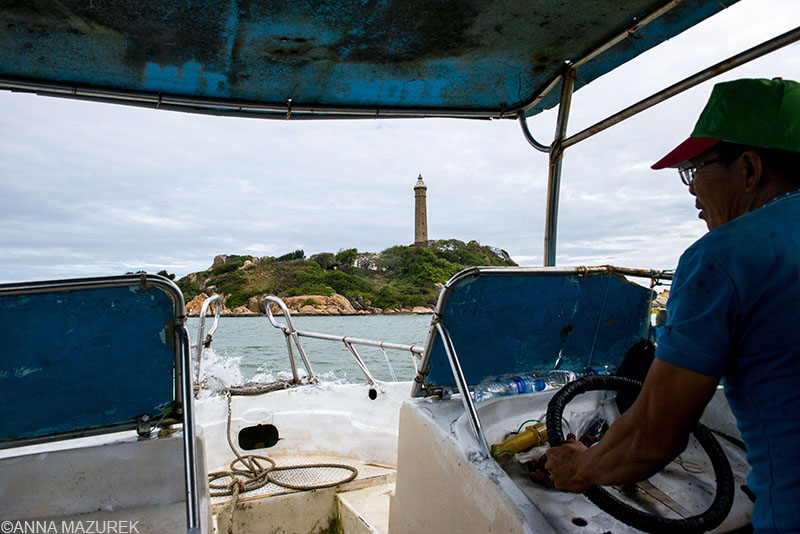 The short boat ride to Ke Ga Lighthouse was a little sketchy but thankfully, the rest of the transit in Vietnam was reliable and felt a lot safer! (I was really close to the coast, so I knew I was safe.)
The short boat ride to Ke Ga Lighthouse was a little sketchy but thankfully, the rest of the transit in Vietnam was reliable and felt a lot safer! (I was really close to the coast, so I knew I was safe.)
Vietnam Transit Options
Buses are the cheapest way to travel. Overall, the sleeping buses are fairly nice. You’ve got a lot of space, and they are air-conditioned. I suggest a bottom bunk if you have a lot of luggage. (You have to take off your shoes and put them in a bag, which I find annoying when you stop at rest stops. They give you communal flip-flops but that grosses me out.)
Trains are okay but pricier. In 2019, it was about $30 for me to go from Da Nang to Na Trang. (There were definitely roaches in my cabin so take a sleep sack to sleep in!) In big cities, I used Grab, a rideshare app that’s popular all over Asia. The app also offers motorbike taxis, which I used a few times. Helmets are provided.
I took a ferry to Phu Quoc island, which was really nice. It was $20 roundtrip. Buy tickets for all transit from the station if possible. It’s always cheaper this way. Domestic flights are fairly cheap but always connect through big cities. In 2019, I traveled by land my entire month-long trip.
Overall, thoughts on Vietnam:
I always enjoy visiting Vietnam. It’s a bit more intense than the rest of Southeast Asia. There is some stunning scenery and the food was amazing. I highly recommend it but just avoid the beaches during the rainy season.
Affiliate links are used in this post. If you make a purchase, I earn a small commission at no cost to you, which goes toward the cost of maintaining this blog.
For more about Southeast Asia, check out these posts:

